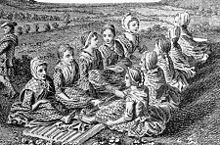
Hello. I'm writer Antoinette Beard/Sorelle Sucere. Welcome to my blog, which is dedicated to all the loving, intelligent, brave, wise, strong, gentle, kind, sweet-and-geeky, humble-and-patient, --- whether they have hands, paws, hooves, wings, fins, or even, --- yes, flippers, --- and to all eager readers and hard-working authors, everywhere.
Meanwhile...

I love all creatures. I consider them, all of them, to be sentient beings... I write thrillers, fantasy, mysteries, gothic horror, romantic adventure, occult, Noir, westerns and various types of short stories. I also re-tell traditional folk tales and make old fairy tales carefully cracked. I'm often awake very early in the morning. A cuppa, and fifteen minutes later I'm usually writing something. ;)
Wednesday, June 27, 2018
Saturday, June 16, 2018
Friday, June 15, 2018
Thursday, June 14, 2018
Wednesday, June 13, 2018
"Outlander," Season 4, Filming Cumbernauld - Caitriona Balfe (Claire Fraser)...
Fascinating... I love behind the scenes stuff!!!
Wool Wauking...

Engraving of Scotswomen singing a waulking song while walking or fulling cloth, c. 1770.
Fulling, also known as tucking or walking (spelt waulking in Scotland), is a step in woollen clothmaking which involves the cleansing of cloth (particularly wool) to eliminate oils, dirt, and other impurities, and making it thicker. The worker who does the job is a fuller, tucker, or walker,[1] all of which have become common surnames.
Fulling involves two processes, scouring and milling (thickening). Originally, fulling was carried out by the pounding of the woollen cloth with a club, or the fuller's feet or hands. In Scottish Gaelic tradition, this process was accompanied by waulking songs, which women sang to set the pace. From the medieval period, however, fulling was often carried out in a water mill, followed by stretching the cloth on great frames known as tenters, to which it is attached by tenterhooks. It is from this process that the phrase being on tenterhooks is derived, as meaning to be held in suspense. The area where the tenters were erected was known as a tenterground.
Scouring
In Roman times, fulling was conducted by slaves working the cloth while ankle deep in tubs of human urine. Urine was so important to the fulling business that it was taxed. Stale urine, known as wash, was a source of ammonium salts and assisted in cleansing and whitening the cloth. By the medieval period, fuller's earthhad been introduced for use in the process. This is a soft clay-like material occurring naturally as an impure hydrous aluminium silicate. It was used in conjunction with wash. More recently, soap has been used.
Thickening
The second function of fulling was to thicken cloth by matting the fibres together to give it strength and increase waterproofing (felting). This was vital in the case of woollens, made from carding wool, but not for worsted materials made from combing wool. After this stage, water was used to rinse out the foul-smelling liquor used during cleansing. Felting of wool occurs upon hammering or other mechanical agitation because the microscopic barbs on the surface of wool fibres hook together, somewhat like Velcro.
Fulling mills

A fulling mill from Georg Andreas Böckler's Theatrum Machinarum Novum, 1661
From the medieval period, the fulling of cloth often was undertaken in a water mill, known as a fulling mill, a walk mill, or a tuck mill, and in Wales, a pandy. In these, the cloth was beaten with wooden hammers, known as fulling stocks or fulling hammers. Fulling stocks were of two kinds, falling stocks (operating vertically) that were used only for scouring, and driving or hanging stocks. In both cases the machinery was operated by cams on the shaft of a waterwheel or on a tappet wheel, which lifted the hammer.
Driving stocks were pivoted so that the foot (the head of the hammer) struck the cloth almost horizontally. The stock had a tub holding the liquor and cloth. This was somewhat rounded on the side away from the hammer, so that the cloth gradually turned, ensuring that all parts of it were milled evenly. However, the cloth was taken out about every two hours to undo plaits and wrinkles. The 'foot' was approximately triangular in shape, with notches to assist the turning of the cloth.
History
There are several Biblical references to fulling (2 Kings 18:17; Isaiah 7:3 and 36:2; Malachi 3:2; Mark 9:3). Prior to this, at least one reference appears in the speeches of Lysias, written in Athens during the 5th century BC. The first references to fulling mills are reported in Persia[citation needed]. By the time of the Crusades in the late eleventh century, fulling mills were active throughout the medieval world, .[2] They appear to have originated in 9th or 10th century in Europe. The earliest known reference to a fulling mill in France, which dates from about 1086, was discovered in Normandy.
Tuesday, June 12, 2018
Monday, June 11, 2018
Cat Can't Get Enough Of Swimming At The Beach!!!...
!!!...
Sunday, June 10, 2018
"Kelpie," --- [Beautiful short film]...
A kelpie is a monstrous water horse from Celtic folktales, such as I'm working on for my anthology, --- "Faeries, Warriors, Kings & Queens"...
Monday, June 4, 2018
Subscribe to:
Posts (Atom)